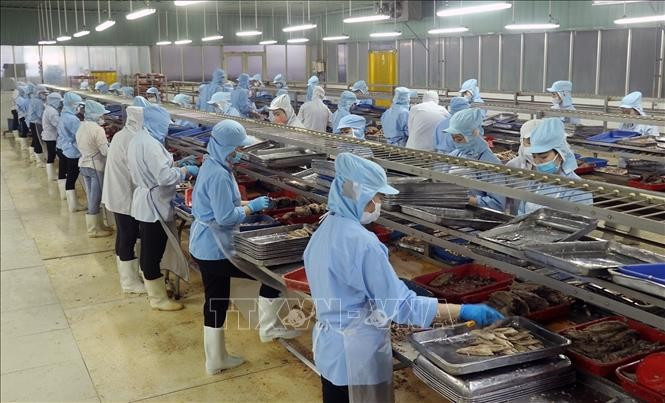US cuts tariff to 20% on Vietnam, investment unaffected: expert

Hanoi, August 5 (VNA) – The US's new 20% reciprocal tariff on Vietnamese imports, down from 46%, will not derail investment flows into Vietnam, according to Dr. Le Quang Minh from the University of Economics and Business at the Vietnam National University-Hanoi.
The reduction, a positive result of bilateral negotiations, reflects Vietnam’s growing stature as the US’s key trade partner in Southeast Asia, Minh told the Vietnam News Agency.
The tariff, effective on August 7, 2025, as outlined in an executive order signed by President Donald J. Trump, is notably lower than those imposed on other major exporters, including India (25%), Canada (35%), and China (50%). Minh called the 20% rate “relatively appropriate”, given Vietnam’s considerable trade surplus with the US.
This is both a challenge and a driving force for Vietnam to deepen reforms and bolster competitiveness, he said, stressing that the tariff cut reflects Vietnam’s importance in the global supply chain.
Meanwhile, the "not too big" tariff difference from neighbouring countries' such as Thailand, Cambodia, Indonesia, Malaysia, and the Philippines, all at 19%, may slightly dent Vietnamese goods' competitiveness against these rivals, but is unlikely to cause considerable impact on investment flows, he opined.
To secure further reductions, possibly for specific industries, Vietnamese ministries and agencies should persist in dialogue with US counterparts to foster a fair and mutually beneficial trade environment, he advised.
He stressed the need for greater market transparency, particularly in product origin rules to address US concerns about trade fraud and illegal transshipment. Providing businesses with guidance and support to boost competitiveness and diversify export markets is also critical, he added.
Vietnamese companies, he urged, must invest in research and development, increase local content in products, and build independent brands to boost value and shed their role as a low-cost manufacturing hub. They should also negotiate with US importers to share tariff burdens, streamline production costs, and tap new export destinations to reduce reliance on a single market./.





